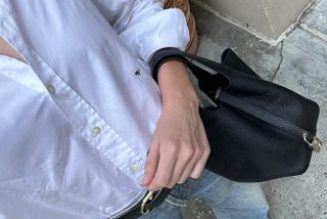
Imagine a real-life situation of a consumer buying basmati rice at a retail store: The consumer walks into the store, picks up the packaged rice or in the case of unpackaged rice, feels and smells the rice before selecting the rice and paying for it.
Now imagine a situation wherein a customer buying basmati rice not only buys the product but also gets to experience the journey of the rice from sowing to harvesting to processing to the point of sale.
Bringing this experience to a low engagement category with the use of a Virtual Reality set-up is KRBL for its flagship product – India Gate Basmati Rice. To drive up engagement levels, the brand has set up experience zones in a modern retail format across five cities – Delhi, Gurugram, Mumbai, Bengaluru and Lucknow – where the brand takes the shopper through an immersive experience of visiting the whole journey from farm to fork.
Kunal Sharma, Head of Marketing & Business Head Modern Trade and Ecommerce, KRBL Limited says, “We attempt to bring in higher engagement with the shopper so that they can appreciate the nuances of the category better and who better than India Gate to relate about this journey?
“In the process, we take the consumers to our world-class facility at Dhuri in Punjab, the world’s largest rice milling plant. The consumers get to see the entire process in a structured manner from paddy to how it is processed, aged and packed. We are getting positive feedback from consumers for the whole immersive experience.”
Currently, KRBL is piloting this at Reliance Retail with plans to subsequently scale it up.
The experience-led initiative is part of the major change seen in the recent past in KRBL’s marketing strategy: to align its marketing initiatives with the company’s business objectives.
For starters, the company has changed the lens through which it sees India, moving from looking at India as one market to taking a regional approach. Explains Sharma, “We adopted a regional strategy for our communication approach as well as defining our objectives in each regional market.”
This led to KRBL’s ‘Basmati Rice Se No Compromise’ campaign, which urged consumers to move from loose to packaged branded rice, and was anchored in the Hindi-speaking markets and not in the South which is not a loose basmati-consumption market.
Taking this forward, KRBL conducted extensive consumer research with Landour to help educate and empower consumers. Sharma says, “We have called this research exercise internally as Educate and Empower based on which we will revamp our entire portfolio and our packaging to take to the market. It is anchored on a lot of strong consumer insights and we should be in the market by the first quarter of the next financial year with the revamped piece and a new communication anchored on ‘Basmati Rice se No Compromise.”
Tapping General Trade For Growth
In India, the basmati rice segment is approximately a 1.8 million metric ton volume market – an estimated value of Rs 10,000-12,000 crore – for in-house consumption and a similar amount for the hotel restaurant and catering segment.
Within the 1.8 million metric tons, only about 0.6 million metric tons (i.e. roughly one-third) is packaged rice consumption with 1.2 million metric tons being loose rice.
The category has been witnessing a consumption shift from loose to packaged, which can be area of growth over the next four to five years. If one looks at India’s current retail ecosystem – as reported by Nielsen – there are about 1.1 crore to 1.2 crore retail outlets and within that packaged basmati rice as a category is present in about 6.5 lakh to 6.75 lakh general trade outlets.
The low penetration of basmati rice in general trade, when compared to modern trade for this segment, remains the biggest opportunity for the brand.
Sharma adds, “If you look at our advertising and reach, it is similar to brands in the FMCG staples category. However, our current numeric availability offers a huge opportunity to grow. This is one of the key drivers for the loose to packaged conversion because today there are a huge set of outlets where loose is available and packaged is still not available in the category. Retail availability getting ramped up is one of the most important levers of this conversion.” He continues, “Within the 0.6 million metric tons, KRBL commands a market share of 32-33% in the packaged consumer basmati rice segment. However, this year we have seen a significant expansion in our market share. In December, we had about 37% market share in general trade and 40% market share in modern trade.”
Modern trade and e-commerce currently contribute about 22% per cent of KRBL’s domestic revenue and are consistently growing, and in fact, growing much faster than the general trade ecosystem. Sharma says, “We are looking at our e-commerce business almost doubling in revenue from about 4% last year to 8% this year.”
Betting Big On Regional
Highlighting regionalisation, KRBL’s #ExperimentsWithBasmati campaign was carried out in South India. Sharma says, “Basmati is essentially anchored on the consumption of biryani and hence we found ourselves landlocked in the opportunity to how to grow that market.” Though India Gate enjoys a 70%-75% market share in the South, the brand’s focus is to drive recipe experimentation to ensure basmati rice is used for dishes other than biryani.
The brand noticed that in the metros, regional dishes such as lemon rice, and mint rice were being made with basmati. This provided an opportunity for the brand to build a new consumption avenue in South India. Says Sharma, “While biryani remains the anchor, the growth comes from people who try to experiment using basmati rice beyond biryani and traditional usage.”
This insight led to the #ExperimentsWithBasmati campaign where digital influencers and word of mouth played a significant role. Sharma adds, “It will take three to four years to see the results. However, at a consumer level, we see this to be a crucial behavioural change in terms of new considerations of usage that we are trying to build in the South. We are not trying to wean away regional consumers from their traditional eating habits. However, we found that consumers found that the taste of eating some traditional dishes such as lemon rice was elevated when it was made with basmati rice. Hence, we navigated towards a newer usage to drive this whole piece.”
Slicing Opportunity To Drive Product Innovation
Currently, South India followed by North India are the biggest markets for KRBL with East being seen as a growth opportunity for certain segments and markets. However, West India is an under-indexed market versus pan India and KRBL is looking at an aggressive market share gain and growth in this region.
The company’s endeavour to increase its Total Addressable Market has guided the entry into the regional rice market with the launch of India Gate Kolam, Ambemor, Sona Masoori and Jeera Rice categories. Sharma says, “As the various regional rice varieties are used in daily consumption, the market size is 10x that of basmati rice. However, we are getting only into the premium segment (raw aged rice segment). This opens up a new business opportunity. Posting Rs 100 crore last year, we are looking at a Rs 200 crore revenue from the regional rice category this year. We now plan to start advertising and creating large-scale awareness in the southern markets around our regional rice category.”
Another area of growth is rice adjacencies with the recent launch of India Gate Classic Biryani Masalas in three variants: Hyderabadi, Lucknowi and Kolkata. A big opportunity also lies in the niche health space where the range includes Natural Quinoa, Brown rice and brown basmati rice. Looking ahead, the brand is bullish on the multi-benefit rice space – black rice, red rice, fortified rice, and low GI rice – with a focus on modern trade and e-commerce. The company is also looking to leverage the strength of the brand to expand into newer categories outside the rice category.
Recalibrating The Media Strategy
Even from a media strategy perspective, there has been a major recalibration with Wavemaker being onboarded as the media agency. Sharma says, “Media has a very strong role to play because our communication strategy now drives or dovetails into our business objective and thus has to be more effectively deployed. 22% of our revenue comes from modern trade and e-commerce channels, and for premium rice like Basmati, digital has a significant affinity to our consuming audience. We have significantly upped our media spends on digital, in line with the overall FMCG segment.”
In terms of media investments, KRBL has invested in big-ticket impact properties. Sharma says, “We are not a brand that does multiple impact properties through the year. We go through a strong selection process of which property dovetails to our agenda.” For KRBL, MasterChef India was a seamless integration where the brand talked about its rice grain and its benefits versus loose rice. KRBL will be taking its partnership with the franchisee ahead by sponsorship on the upcoming MasterChef India – Tamil where the chef judges will highlight how basmati rice can be used in different South Indian dishes. The brand has also invested in Bigg Boss franchisees in the South for impact and reach in its core markets.
KRBL has also adopted a wider media presence throughout the year. Says Sharma, “We have moved from a campaign-led approach to having a more continuous presence through the year. We have moved up our presence from 22 weeks to 32 weeks on air in the year.” He continues, “If you look at our category, we are the leaders in terms of share of voice and are the top-of-the-mind brand in the category. Our objective is to put in media monies on television to maintain a certain level of reach essentially, GRPs by market which we arrive at.” Digital will be the key driver in KRBL’s media mix and the brand is looking to up its digital investments by 20% – 25% next year.









![[New Study] 2023 Luxury Fashion Market Strategic Planning and Projection - The Knox Student](https://www.wazupnaija.com/wp-content/uploads/2023/08/new-study-2023-luxury-fashion-market-strategic-planning-and-projection-the-knox-student-327x219.webp)